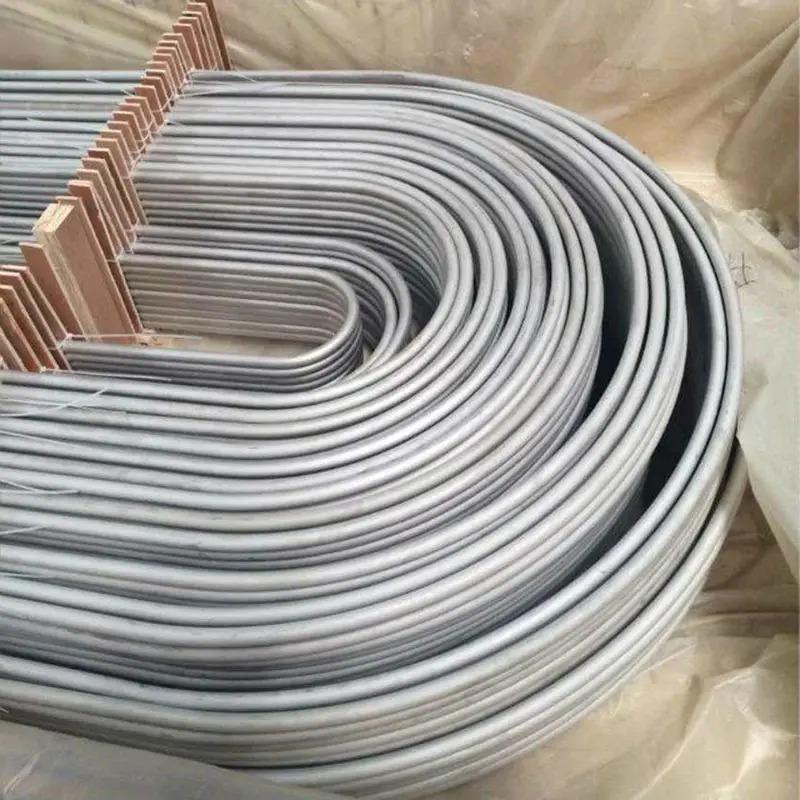Duplex stainless steel pipes have been widely used in sour crude oil environments due to their unique microstructure and excellent performance. However, there are many corrosion factors in this environment, which will have a complex impact on the corrosion behavior of duplex stainless steel pipes. The following will introduce the corrosion types, influencing factors and corresponding protective measures.
Characteristics of duplex stainless steel pipes
Duplex stainless steel pipes have austenite and ferrite two-phase structure, which makes it have the toughness and weldability of austenitic stainless steel and the strength and chloride stress corrosion resistance of ferritic stainless steel. Compared with traditional carbon steel or austenitic stainless steel, duplex stainless steel pipes perform better in strength and corrosion resistance, and can better adapt to sour crude oil environments.
Corrosion types in sour crude oil environments
Uniform corrosion: Sour crude oil contains a variety of sulfides, such as hydrogen sulfide, mercaptan, etc. Under certain temperature and pressure conditions, these sulfides will react chemically with the surface of the duplex stainless steel pipe, causing the metal surface to be uniformly corroded. Although duplex stainless steel pipes have a certain degree of corrosion resistance, they will still undergo a certain degree of uniform corrosion when they are in a sulfur-containing crude oil environment for a long time, causing the pipe wall to gradually become thinner.
Pitting: When halogen ions such as chloride ions exist in sulfur-containing crude oil, the passivation film on the surface of the duplex stainless steel pipe will be destroyed. In places where the passivation film is weak, halogen ions will preferentially adsorb and react with the metal to form pitting nuclei. Over time, the pitting nuclei will gradually develop into pitting pits, which will affect the performance and service life of the pipe.
Stress corrosion cracking: In a sulfur-containing crude oil environment, duplex stainless steel pipes are subjected to tensile stress and corrosive media at the same time. When the tensile stress reaches a certain level, the corrosive medium will form microcracks on the metal surface, which will gradually expand under the action of stress and eventually cause the pipe to crack. Stress corrosion cracking is sudden and catastrophic, posing a serious threat to the safety of duplex stainless steel pipes.
Factors affecting the corrosion behavior of duplex stainless steel pipes
Temperature: Increased temperature will accelerate the chemical reaction rate of corrosive media such as sulfides, thereby accelerating the corrosion of duplex stainless steel pipes. At the same time, temperature changes will also affect the stability of the passivation film on the metal surface, making it more easily destroyed at high temperatures, thereby aggravating corrosion.
Sulfur content in crude oil: Sulfur content is one of the key factors affecting the corrosion behavior of duplex stainless steel pipes. As the sulfur content increases, the corrosion rate usually accelerates. Different forms of sulfur have different effects on corrosion. Active sulfides such as hydrogen sulfide are more corrosive, while some inactive sulfides can also be converted into active sulfides under certain conditions, thereby causing corrosion.
pH value: The pH value of sulfur-containing crude oil has an important influence on the corrosion of duplex stainless steel pipes. When the pH value is low, the acidic environment promotes the hydrolysis of sulfides and produces more hydrogen ions, thereby accelerating the corrosion process. In a neutral or weakly alkaline environment, a passivation film is more likely to form on the metal surface, which plays a certain protective role on the pipe.
Protective measures
In order to reduce the corrosion of duplex stainless steel pipes in a sulfur-containing crude oil environment, the following protective measures can be taken. First, reasonably select the material of duplex stainless steel, and select a duplex stainless steel model with higher corrosion resistance according to the specific composition and working conditions of the sulfur-containing crude oil. Secondly, the surface of the pipe is treated with anti-corrosion, such as coating protection, chemical plating and other methods, to form a protective film on the metal surface to isolate the contact between the corrosive medium and the metal. In addition, the occurrence of corrosion can be reduced by optimizing the operating conditions and controlling parameters such as temperature and pH value within a suitable range. At the same time, regular inspection and maintenance of duplex stainless steel pipes, timely detection and treatment of corrosion defects are also important measures to ensure the safe operation of pipes.
The corrosion behavior of duplex stainless steel pipes in a sour crude oil environment is a complex process, which is affected by a combination of factors. By deeply understanding its corrosion mechanism and taking effective protective measures, the corrosion resistance of duplex stainless steel pipes can be improved, their service life can be extended, and safe and reliable operation in the fields of sour crude oil mining and transportation can be ensured.

